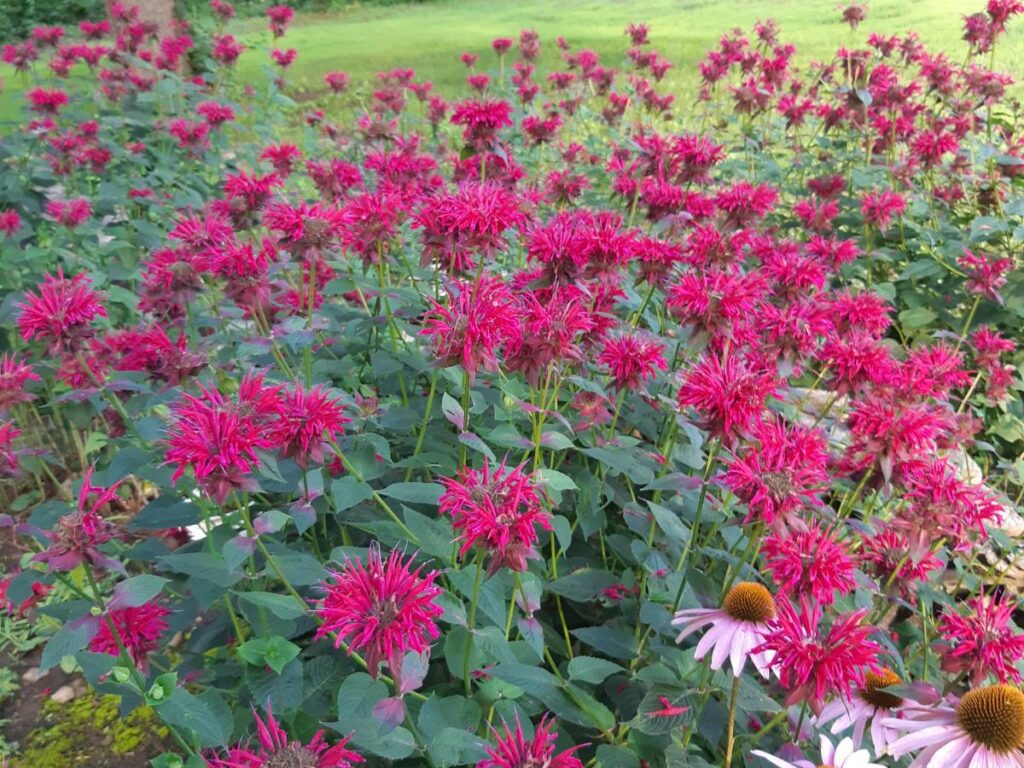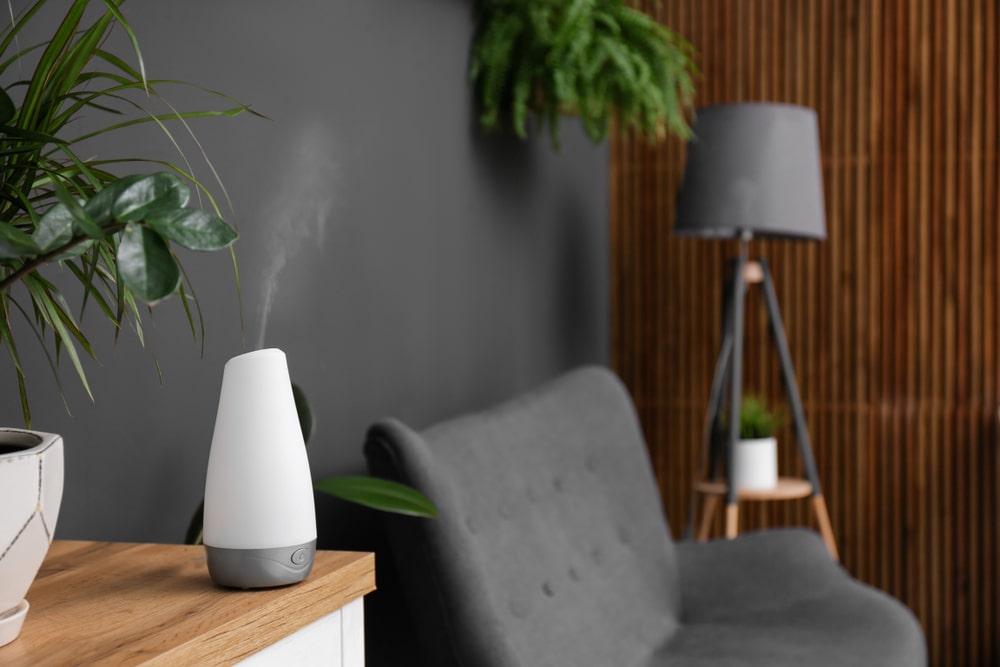Bee balm, also known as Monarda, is a popular perennial plant that is often grown in gardens for its colorful flowers and attractive aroma. The plant is part of the mint family and native to North America.
It is known for its ability to attract hummingbirds and butterflies to the garden. While bee balm is a beautiful and beneficial plant to grow, some gardeners may be concerned about its ability to spread.
In this article, we will discuss the topic of bee balm spreading. We will cover how it spreads, how long it takes for bee balm to spread, how far it spreads, and tips for controlling its spread.
Here’s Does Bee Balm Spread?
Bee balm can spread quickly due to its underground rhizomes. Though it actively grows during the summer months, bee balm will spread to cover large areas of open land over time if left unpruned. Without frequent maintenance, this plant can quickly become invasive in certain regions.

Understanding Bee Balm
Alright, now that we’ve given you a sneak peek at what bee balm is, let’s dive deeper into this beautiful perennial plant.
First off, bee balm is a real trooper. It comes back year after year and is known for its vibrant and colorful flowers that bloom in late spring to early summer. The flowers come in shades of pink, red, purple, and white and have a strong and pleasant aroma that will fill your garden with its sweet scent. It’s a member of the mint family, so you know it’s got some serious staying power.
One of the things that makes bee balm stand out is its growth habits. The plant typically grows to be about 2-4 feet tall and has a clumping habit, which means it will form a dense mass of foliage. Its leaves are fragrant, lance-shaped, toothed, and typically green, but some varieties may have a purplish or bronze tinge.
When it comes to growing and caring for bee balm, it’s important to keep a few things in mind. For starters, it prefers well-drained soil that is rich in organic matter and full sun to partial shade. To keep your bee balm happy and healthy, make sure to keep the soil consistently moist, but not waterlogged. Also, make sure to provide enough air circulation to prevent powdery mildew. And don’t forget to give it some love once a month during the growing season with a balanced fertilizer.
But it’s not just a pretty face—bee balm also has a long history of traditional and medicinal uses. Bee balm has essential oils in its leaves and flowers that are antiseptic, anti-inflammatory, and antioxidant. It has been used for hundreds of years to treat things like fevers, headaches, and stomach problems.
So, now you know more about bee balm, its growth habits, and how to care for it. In the next section, we’ll take a closer look at the question of whether bee balm spreads and give you tips and tricks for controlling its spread in your garden.
How Does Bee Balm Spread?
Bee balm is a hardy and resilient plant that can spread in a variety of ways, with the most common method being through its underground rhizomes. A rhizome is an underground stem that runs horizontally just below the soil surface and produces new plants as it spreads outward from the parent.
Bee balm also self-seeds, which means that its small seeds are scattered by wind, water, and animals across nearby gardens, meadows, and fields.
In some cases, bee balm can become invasive or spread aggressively – outcompeting other plants for space, light, and nutrients.
To control its spread in areas where this occurs, it’s important to keep an eye on the plant and remove any unwanted colonies as soon as they develop.
This can be done by digging up the soil around them and cutting their rhizomes with a sharp spade or pruner, but it’s important to make sure all parts of the rhizome are removed so they don’t grow into additional colonies.
It’s also a good idea to regularly deadhead the plant; storing flower heads before they have a chance to produce seeds will help to limit their spread even more.
How Long Does It Take for Monarda to Spread?
Bee balm can spread rapidly under the right conditions. It spreads through underground rhizomes and self-seeding, and can cover a large area in just a couple of seasons. In ideal conditions, bee balm can become quite invasive, so it’s important to keep an eye on its growth and take steps to control it if necessary.
The rate at which bee balm spreads depends on multiple factors, such as the growing conditions, size, and health of the plant, as well as the method of spread.
If planted in a favorable environment with good care and maintenance, bee balm can quickly grab hold of its surrounding space and create new colonies with help from its underground rhizomes.
Self-seeding is also common among bee balm plants, and it can be carried by wind, water, or animals to nearby gardens or fields.
Environmental conditions such as drought, disease, or pest infestations may slow down or even stop the spread of bee balm plants.
For this reason, it is important to monitor your bee balm’s growth closely in order to address these issues promptly. Taking some extra actions, such as cutting back its rhizomes or deadheading flowers, could prevent it from taking over your garden.
By understanding the different elements involved in how fast bee balm spreads and taking action accordingly when needed, you’ll be able to enjoy this beautiful flower without worrying about it invading other parts of your land.
Controlling the Spread of This Perennial: Tips and Tricks
While bee balm is a beautiful and hardy plant, it can become invasive in some areas. It’s important to keep an eye on the plant and take steps to control its spread if it becomes invasive in your area. Here are a few tips and tricks to help control the spread of bee balm in your garden:
- Cut back the rhizomes. This can be done by digging up the soil around the plant and cutting the rhizomes with a sharp spade or pruner. This method can be effective, but it’s important to remember to remove all of the rhizomes. If even one small piece is left behind, it can grow into a new colony.
- Regularly remove the seeds before they have a chance to germinate. This can be done by deadheading the plant, which means removing the spent flowers before they have a chance to produce seeds.
- Keep an eye on the plant and remove any unwanted colonies as soon as they appear.
- Keep the soil moist, but not waterlogged. Bee balm prefers consistent moisture, but too much water can promote the growth of rhizomes.
- Plant bee balm in an area that gets full sun to partial shade. This will help to prevent powdery mildew, a common issue with bee balm.
- Keep an eye on the plant and remove any unwanted colonies as soon as they appear.
- Consider planting bee balm in a contained area such as a raised bed or large container. This will help to prevent the plant from spreading beyond the desired area.
- Consider using a ground cover or mulch around the base of the bee balm plant to help control the spread of rhizomes.
- Regularly check the plant for signs of disease or pests, and take appropriate actions as needed.
Keep in mind that some varieties of bee balm are more invasive than others, so choose a variety that is known to be less aggressive.
Growing and Caring for Bee Balm
Bee balm is a hardy, drought-tolerant plant that can thrive in a variety of soil and light conditions. To make sure the plant grows well and makes the most flowers possible, it is important to give it the right care and growing conditions.
When planting bee balm, it should be placed in well-drained soil that is rich in organic matter. The plant prefers full sun to partial shade, but it can tolerate a wide range of soil pH levels, from slightly acidic to neutral (6.0 to 7.0).
Bee balm is drought-tolerant but prefers consistent moisture. Watering regularly during dry spells will help keep the plant healthy and promote flower production.
Adding a 2-inch layer of mulch around the base of the plant will help retain moisture in the soil and reduce the frequency of watering. Fertilizing bee balm once a month during the growing season with a balanced fertilizer high in phosphorous will also help promote healthy growth and flower production.
Powdery mildew is one of the most common issues that can affect bee balm; this fungal disease is caused by high humidity and poor air circulation. To prevent powdery mildew, ensure that the plant has good air circulation and avoid overcrowding.
Conclusion
While bee balm is relatively easy to grow, it does have a tendency to spread quickly, which can be both a positive and a negative. On the one hand, some gardeners appreciate the fact that it will fill in areas of the garden without needing to be replanted, but it can also be a hassle to keep it from overtaking other plants.
Ultimately, it’s up to the individual gardener to decide whether or not they want to keep bee balm under control. If they’re willing to take the time to prune it or contain it within a certain area, it can be a great addition to the landscape. However, if they’re looking for a low maintenance plant, it may be best to avoid this one.







